What does a veterinary physiotherapy session involve?
Before the session
Please ensure your animal is clean and dry. A quiet area is needed for treatment and a handler to hold the animal and lead them up for dynamic assessment. If your animal requires physiotherapy for a specific condition following veterinary investigation or treatment, I am required by law to obtain veterinary referral. This is not required for maintenence treatment.
Please ensure your animal is clean and dry. A quiet area is needed for treatment and a handler to hold the animal and lead them up for dynamic assessment. If your animal requires physiotherapy for a specific condition following veterinary investigation or treatment, I am required by law to obtain veterinary referral. This is not required for maintenence treatment.
Clinical history
For initial sessions, after noting basic details for your animal (age, breed etc.) I will ask you about their clinical history – any previous/ongoing conditions, surgeries or medication – current management, routine, exercise level and any issues that you are concerned about or would like to address. If necessary, I will also speak to and/or request clinical records from your vet.
For initial sessions, after noting basic details for your animal (age, breed etc.) I will ask you about their clinical history – any previous/ongoing conditions, surgeries or medication – current management, routine, exercise level and any issues that you are concerned about or would like to address. If necessary, I will also speak to and/or request clinical records from your vet.
Assessment
The initial session will begin with a full static and dynamic assessment followed by palpation, range of motion and other assessments as required. For follow up sessions, I will discuss your animal’s progress with you and briefly re-assess them to identify any changes since the previous session.
During the static assessment, I will look at your animal standing squarely from in front, behind and both sides to assess their conformation, posture, overall balance, symmetry, limb placement, weight distribution and any visible muscle imbalances.
Dynamic assessment involves me watching your animal walk and trot in a straight line then turn in a tight circle in each direction if appropriate. For horses, I may also ask to see them backing up and possibly on different surfaces, on the lunge or under saddle, while for dogs it can be useful to see them perform a few sit-to-stands. During this stage of the assessment, I am looking for gait asymmetries, signs of lameness or dysfunction or more subtle differences in weight distribution, inward or outward limb deviation, foot placement, flight arc, whether they are tracking up and their head and tail carriage.
The next stage is a thorough palpation to assess muscle mass and tone and identify any areas of restriction, pain, heat or swelling. I will assess range of motion to evaluate joint health and function and may also perform a spinal assessment and tests for neurological function if indicated.
The assessment will help me to identify aims for treatment and create an effective treatment and remedial exercise plan.
The initial session will begin with a full static and dynamic assessment followed by palpation, range of motion and other assessments as required. For follow up sessions, I will discuss your animal’s progress with you and briefly re-assess them to identify any changes since the previous session.
During the static assessment, I will look at your animal standing squarely from in front, behind and both sides to assess their conformation, posture, overall balance, symmetry, limb placement, weight distribution and any visible muscle imbalances.
Dynamic assessment involves me watching your animal walk and trot in a straight line then turn in a tight circle in each direction if appropriate. For horses, I may also ask to see them backing up and possibly on different surfaces, on the lunge or under saddle, while for dogs it can be useful to see them perform a few sit-to-stands. During this stage of the assessment, I am looking for gait asymmetries, signs of lameness or dysfunction or more subtle differences in weight distribution, inward or outward limb deviation, foot placement, flight arc, whether they are tracking up and their head and tail carriage.
The next stage is a thorough palpation to assess muscle mass and tone and identify any areas of restriction, pain, heat or swelling. I will assess range of motion to evaluate joint health and function and may also perform a spinal assessment and tests for neurological function if indicated.
The assessment will help me to identify aims for treatment and create an effective treatment and remedial exercise plan.
Treatment

Massage
A variety of massage techniques can be used depending on the aims of the case. These include effleurage, petrissage, compression, cross fibre massage, tapotement, trigger point therapy and myofascial release. Benefits of massage include:

Stretching
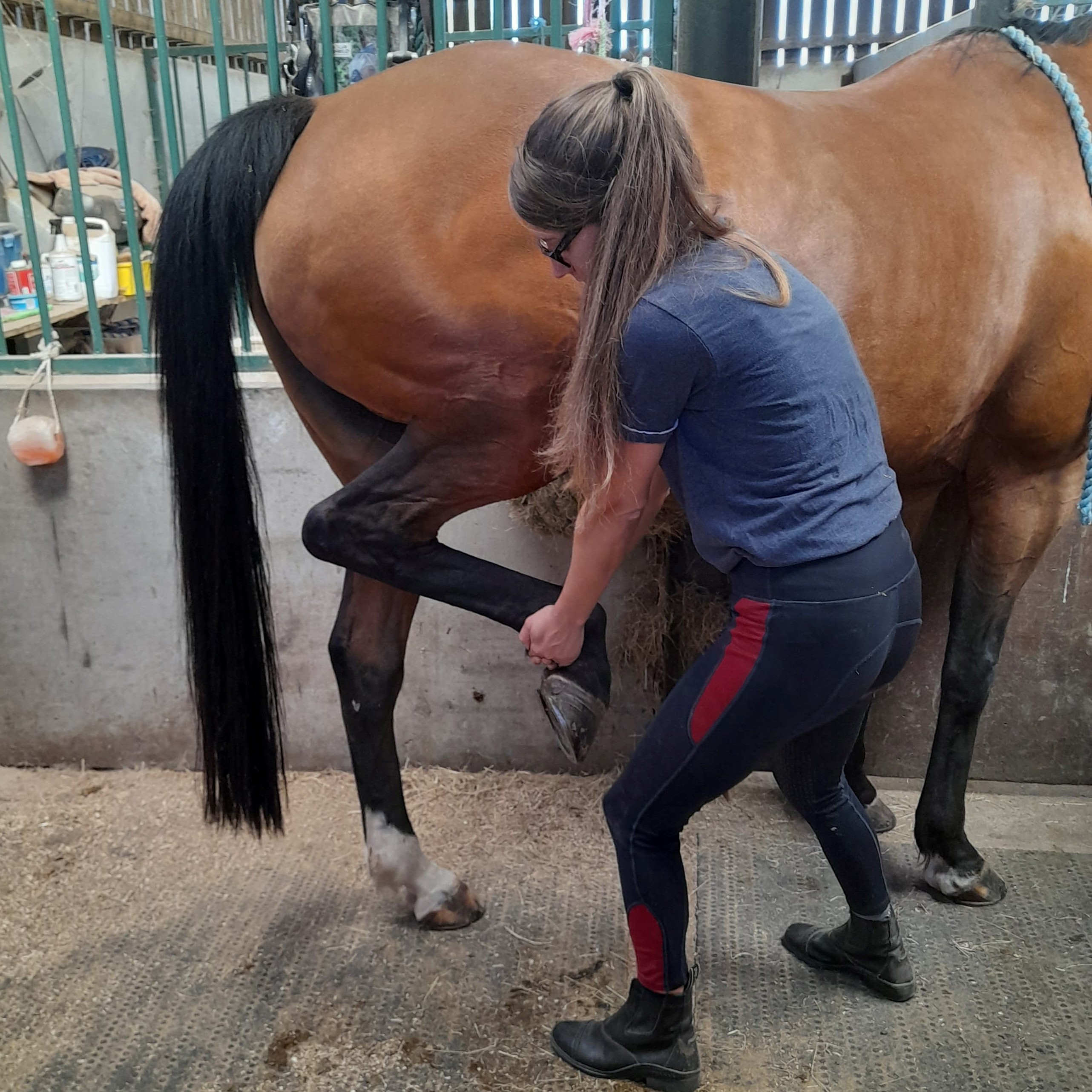
Passive Range of Motion (PROM)
PROM involves manually moving a joint through its natural range of motion within its planes of movement – flexion, extension, adduction, abduction and rotation depending on the joint. PROM can be used to target specific joints or as a precursor to stretching. Benefits of PROM include:

Laser Therapy
Laser therapy or photobiomodulation delivers photons to the tissue which are absorbed by a protein called cytochrome-C-oxidase in the mitochondria causing a cascade of cellular effects. At a lower energy and frequency, laser therapy stimulates healing while at a higher setting it stimulates the release of endogenous opioids, the body’s natural pain relievers. Benefits of laser therapy include:
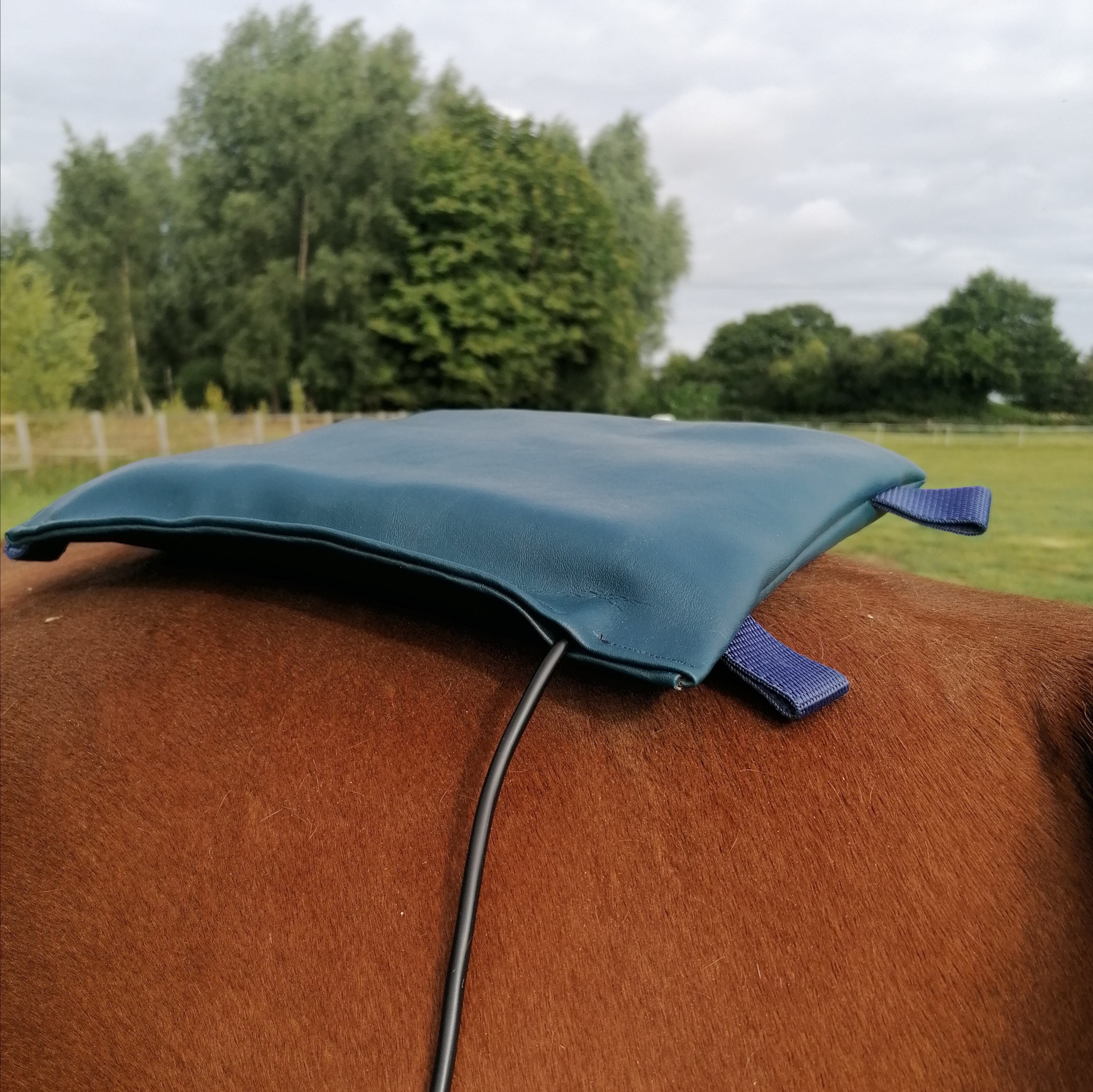
Pulsed Electromagnetic Field Therapy (PEMFT)
PEMFT is a safe, non-invasive therapy which uses an electrical current to generate a magnetic field. Its cellular effects are initiated by calcium ions binding to the protein calmodulin. At higher frequencies, PEMFT increases the negative charge of nerve cell membranes which blocks pain signals. Benefits of PEMFT include:
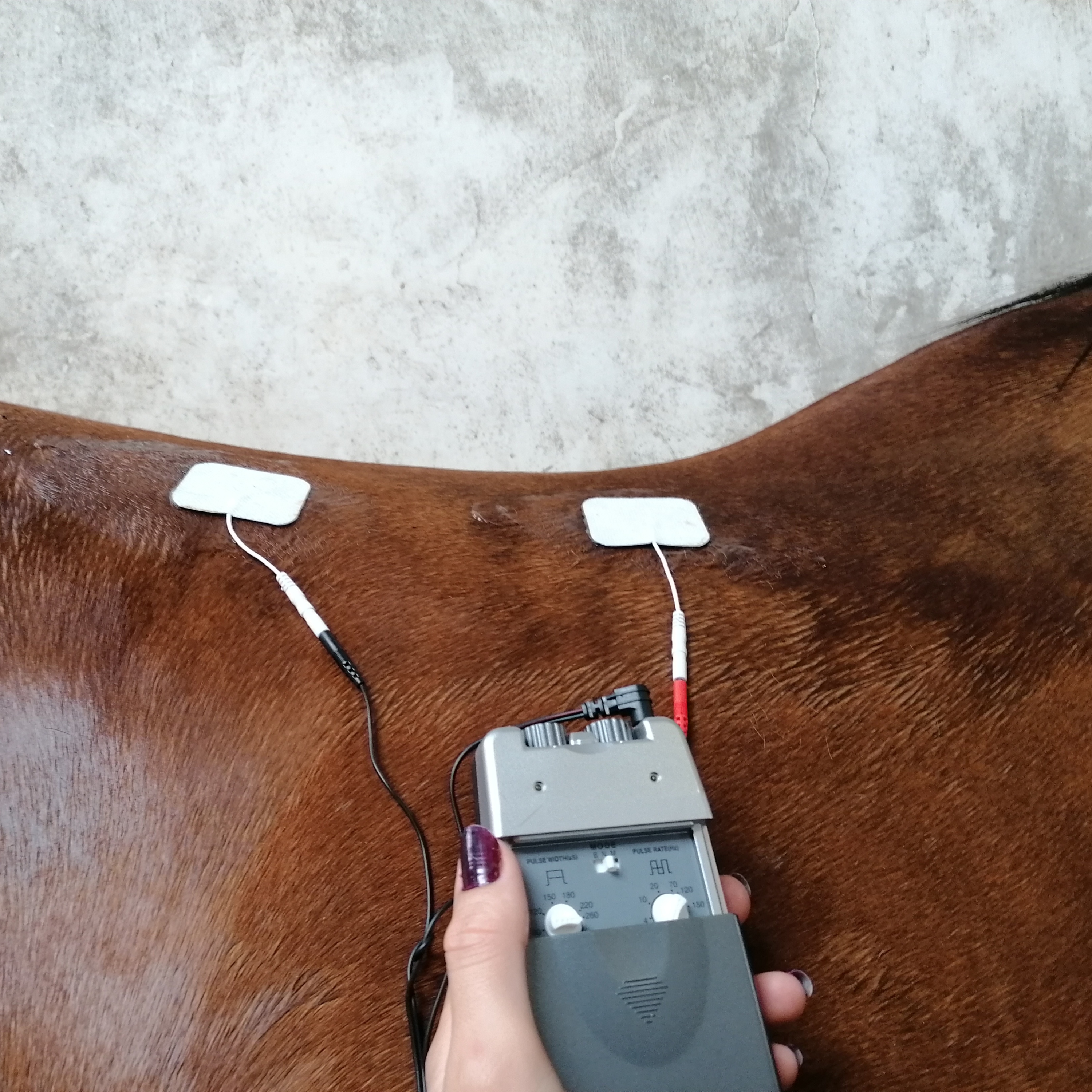
Transcutaenous Electical Nerve Stimulation (TENS)
TENS works by placing two electrodes on the skin to deliver an electrical current which affects pain signalling. At lower frequencies generally used for animals, TENS stimulates release of endogenous opioids which block pain signals Benefits of TENS include:
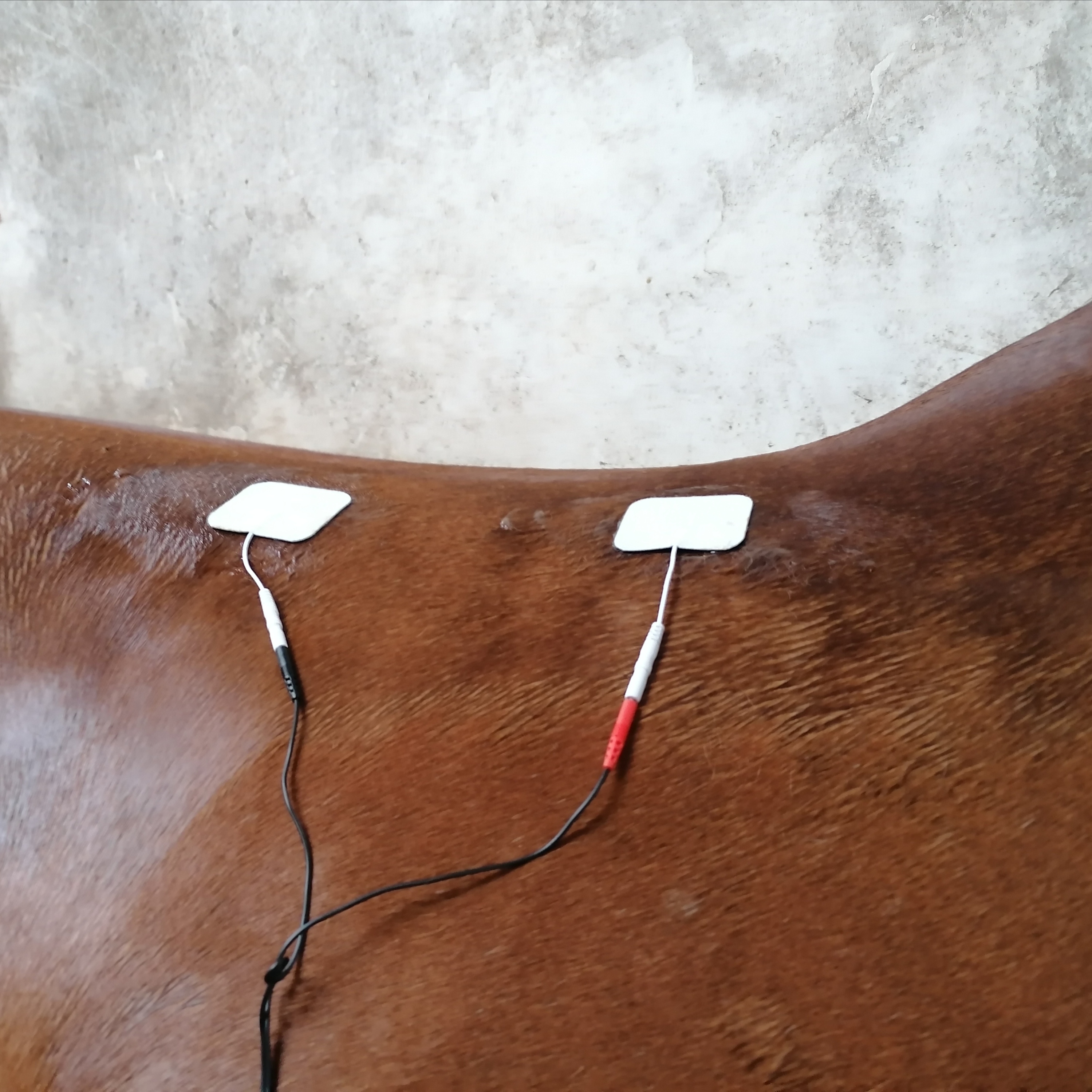
Neuromuscular Electrical Stimulation (NMES)
Similar to TENS, NMES uses an electrical current to artificially stimulate muscle contractions. Benefits of NMES include:

Heat therapy
The transfer of heat energy from a heat pad to the skin stimulates temperature receptors which causes blood vessels to dilate. Sensory nerve fibres transmit signals faster than pain nerve fibres and block pain signals in the spinal cord. Heat can be applied before massage, stretching and exercise and in the later stages of healing. Benefits of heat therapy include:
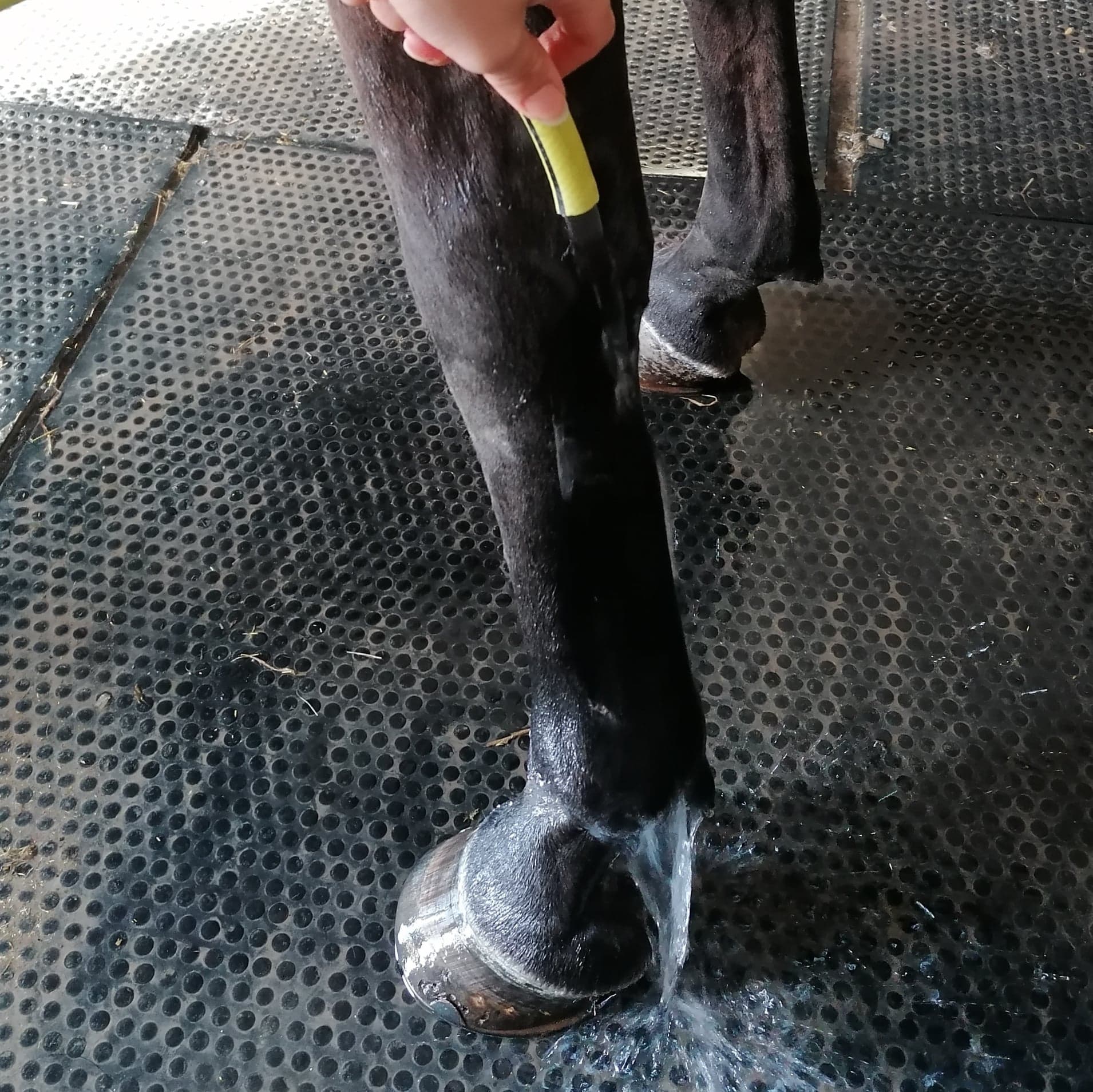
Cryotherapy
Cryotherapy uses ice or cold water to stimulate cold receptors which causes blood vessels to constrict. It is often used post-exercise and for acute injuries to reduce inflammation. Benefits of cryotherapy include:
Remedial Exercise
Remedial exercise is probably the most important part of physiotherapy. The exercises included in your animal’s plan will depend on their current level of exercise, stage of healing if applicable and the aims being addressed.
Exercises may include:
After the session
Your animal can continue with their normal routine but it is advisable to avoid intense exercise for a day or two. I will write up my notes from the session and can provide a report for you and/or your vet if required. Please feel free to contact me between sessions if you have any queries or concerns or want to discuss your animal’s progress.


Massage
A variety of massage techniques can be used depending on the aims of the case. These include effleurage, petrissage, compression, cross fibre massage, tapotement, trigger point therapy and myofascial release. Benefits of massage include:
- Increased blood flow, metabolism and lymphatic drainage
- Increased or decreased muscle tone depending on the technique
- Pain relief
- Relaxation

Stretching
Passive limb and neck stretches can be used to target specific muscle groups or joints and improve movement and function. Holding a stretch results in elongation and relaxation of the muscle fibres. Benefits of stretching include:
- Reduced muscle tension
- Increased extensibility, flexibility and range of motion
- Increased stride length
- Improved performance

Passive Range of Motion (PROM)
PROM involves manually moving a joint through its natural range of motion within its planes of movement – flexion, extension, adduction, abduction and rotation depending on the joint. PROM can be used to target specific joints or as a precursor to stretching. Benefits of PROM include:
- Improved joint range of motion and function
- Reduced pain and stiffness
- Synovial fluid production
- Improved proprioception

Laser Therapy
Laser therapy or photobiomodulation delivers photons to the tissue which are absorbed by a protein called cytochrome-C-oxidase in the mitochondria causing a cascade of cellular effects. At a lower energy and frequency, laser therapy stimulates healing while at a higher setting it stimulates the release of endogenous opioids, the body’s natural pain relievers. Benefits of laser therapy include:
- Increased blood flow, metabolism and protein synthesis
- Optimised healing of injuries/wounds
- Pain relief such as for muscle spasm or painful joints
- Relaxation

Pulsed Electromagnetic Field Therapy (PEMFT)
PEMFT is a safe, non-invasive therapy which uses an electrical current to generate a magnetic field. Its cellular effects are initiated by calcium ions binding to the protein calmodulin. At higher frequencies, PEMFT increases the negative charge of nerve cell membranes which blocks pain signals. Benefits of PEMFT include:
- Increased or decreased blood flow depending on the pulse rate setting used
- Reduced inflammation and swelling/oedema
- Tissue repair
- Fracture healing
- Pain relief for generalised/deep pain such as back pain or sacroiliac pain in horses
- Relaxation

Transcutaenous Electical Nerve Stimulation (TENS)
TENS works by placing two electrodes on the skin to deliver an electrical current which affects pain signalling. At lower frequencies generally used for animals, TENS stimulates release of endogenous opioids which block pain signals Benefits of TENS include:
- Release of serotonin and endogenous opioids (natural pain relievers)
- Pain relief, particularly for chronic pain in horses
- Reduced muscle tension and spasm
- Relaxation

Neuromuscular Electrical Stimulation (NMES)
Similar to TENS, NMES uses an electrical current to artificially stimulate muscle contractions. Benefits of NMES include:
- Maintaining muscle during box/crate rest
- Helping build muscle in combination with exercise
- Increased blood flow
- Re-establishing neural pathways

Heat therapy
The transfer of heat energy from a heat pad to the skin stimulates temperature receptors which causes blood vessels to dilate. Sensory nerve fibres transmit signals faster than pain nerve fibres and block pain signals in the spinal cord. Heat can be applied before massage, stretching and exercise and in the later stages of healing. Benefits of heat therapy include:
- Increased blood flow, metabolism and lymphatic drainage
- Reduced swelling/oedema
- Pain relief
- Reduced muscle tension
- Optimised healing after initial inflammatory phase

Cryotherapy
Cryotherapy uses ice or cold water to stimulate cold receptors which causes blood vessels to constrict. It is often used post-exercise and for acute injuries to reduce inflammation. Benefits of cryotherapy include:
- Decreased blood flow, metabolism and fluid leakage
- Reduced inflammation and swelling/oedema
- Pain relief
- Reduced muscle tension
- Reduced tissue damage during acute inflammation
Remedial Exercise
Remedial exercise is probably the most important part of physiotherapy. The exercises included in your animal’s plan will depend on their current level of exercise, stage of healing if applicable and the aims being addressed.
Exercises may include:
- On/off lead exercise for dogs, in hand walking/long reining/lunging/ridden work plus any training aids for horses
- Passive range of motion
- Weight shifting exercises
- Tactile stimulation
- Dynamic mobilisation exercises for horses – baited stretches, belly lifts, pelvic rounding, tail pulls
- Lateral work
- Pole work
- Hydrotherapy
- Different gaits, surfaces and gradients
After the session
Your animal can continue with their normal routine but it is advisable to avoid intense exercise for a day or two. I will write up my notes from the session and can provide a report for you and/or your vet if required. Please feel free to contact me between sessions if you have any queries or concerns or want to discuss your animal’s progress.
